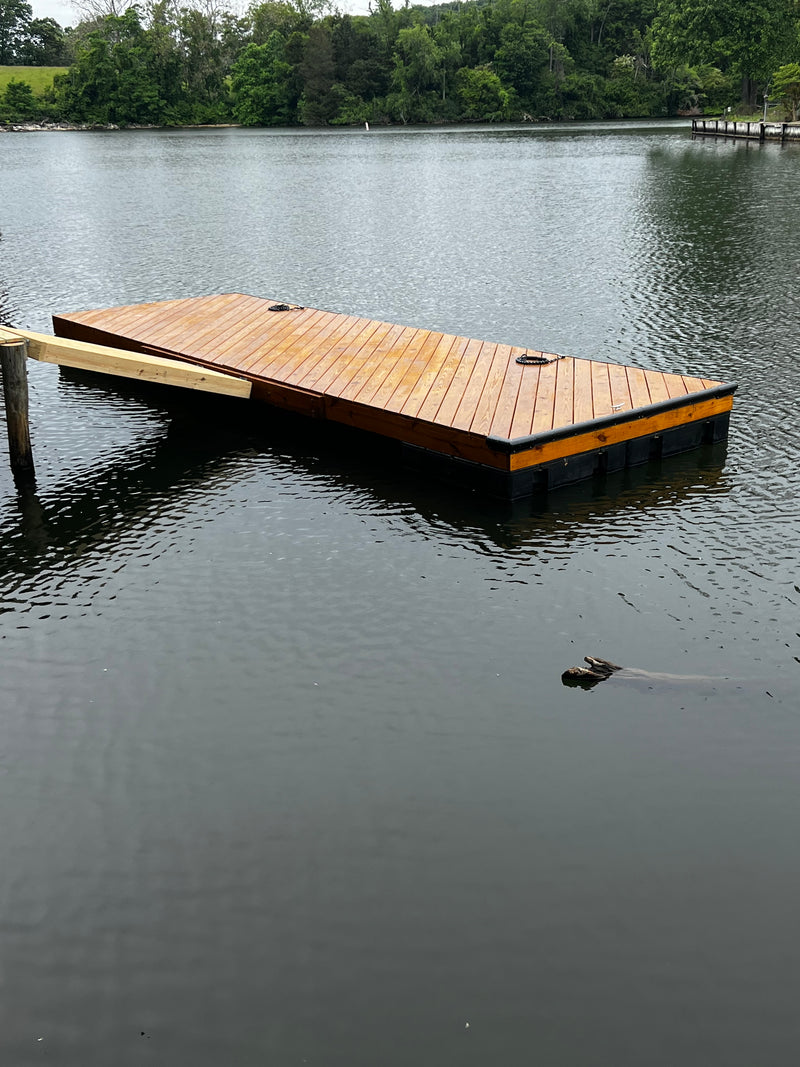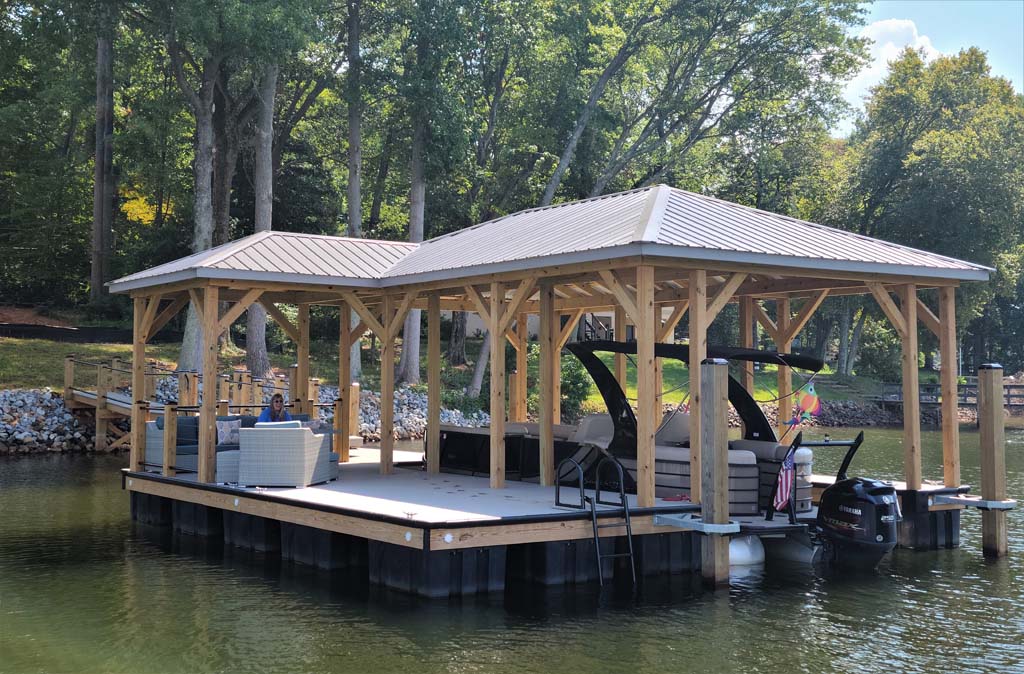Your Overview to Locating the most effective Dock Company for Quality and Reliability
Your Overview to Locating the most effective Dock Company for Quality and Reliability
Blog Article
Develop the Perfect Docking Remedy With Floating Docks
Floating docks present a flexible solution for a variety of maritime needs, adapting seamlessly to varying water degrees and varied vessel types. Their modular nature enables rapid installation and relocation, yet the selection of suitable materials and style attributes is crucial for making sure both performance and visual appeal. As we discover the essential components that add to the effectiveness of floating docks, several essential elements relating to security and maintenance will certainly emerge, questioning about how to optimize your docking experience. The subsequent discussion will certainly light up these important considerations.

Advantages of Floating Docks
Floating docks deal countless benefits that make them an optimal choice for numerous maritime applications. Unlike dealt with docks, floating docks rise and fall with the trend, guaranteeing consistent accessibility for vessels.
In addition, floating docks are normally much easier and quicker to set up compared to traditional set frameworks. Their modular style enables uncomplicated assembly and disassembly, helping with maintenance and moving when needed. This adaptability is especially useful for short-term applications or in atmospheres where conditions may change.
Floating docks additionally have a tendency to be more ecologically friendly, as they minimize interruption to the seabed and bordering marine communities. Their resilient nature minimizes the threat of damage to marine life, promoting a healthier setting. These docks can be tailored to accommodate various vessel dimensions, making certain that they satisfy details functional demands.
Eventually, the mix of flexibility, convenience of setup, and environmental considerations makes floating docks an extremely reliable remedy for a large range of maritime demands.
Picking the Right Products
Picking the proper products for floating docks is critical to guarantee durability, security, and longevity. The selection of materials directly affects the dock's performance in different environmental problems, including exposure to water, sunlight, and prospective wear from aquatic website traffic.
Usual products made use of for floating docks consist of aluminum, wood, and high-density polyethylene (HDPE) Aluminum is light-weight, corrosion-resistant, and calls for minimal maintenance, making it an exceptional option for durability. Its initial expense can be greater contrasted to various other materials.
Wood, while visually attractive and offering a conventional look, can be vulnerable to rot and bug damage if not properly treated. Utilizing pressure-treated wood or normally durable varieties like cedar or redwood can minimize these concerns.
HDPE is a preferred option due to its resistance to UV rays and chemicals, together with being environmentally friendly. dock company. It is readily available and lightweight in numerous colors, allowing for personalization
Ultimately, the ideal material option will rely on certain needs, consisting of budget plan, wanted appearances, and environmental factors to consider. Mindful examination of these elements will certainly lead to a resistant and effective floating dock solution.
Style Factors To Consider for Stability
When designing floating docks, making sure security is a basic element that can considerably affect their capability and safety and security. Stability in floating dock design is influenced by different factors, including buoyancy, weight distribution, and the setup of components. An optimal buoyancy system must use materials that supply enough lift while reducing weight. This equilibrium makes sure that the dock continues to be above water, even under varying tons.
Weight distribution is vital; uniformly distributing lots throughout the dock prevents turning and enhances security. Larger styles can use increased security, specifically in harsh water conditions, while longer docks might call for added supports to stop sagging.
One more crucial consideration is the ecological effect, consisting of wave action and wind. Including features such as sidewalls or skirting can aid reduce the effects of environmental pressures, maintaining security in adverse conditions. Inevitably, a mix of thoughtful design, product option, and understanding of environmental aspects will certainly generate a floating dock that fulfills both stability and security needs.
Installment Tips and Strategies

Next, safeguard the required authorizations and comply with local policies, which might dictate setup methods and environmental considerations. If required, engage a certified service provider experienced in floating dock installments. Use premium materials designed for marine environments to enhance longevity and durability.
When positioning the dock, straighten it alongside the coastline to help with very easy accessibility. Make certain that the anchoring system is durable, utilizing cinder block or helical anchors to stabilize the dock against wind and wave activity. It's essential to make up seasonal water degree variations, including possible ice movement in colder environments.
During the setup, verify the dock's floatation and stability prior to settling the anchoring. Routinely inspect the installment for any type of signs of wear or damage. By following these methods and suggestions, you can accomplish a protected, functional, and aesthetically pleasing floating dock installment that satisfies your needs.
Maintenance and Care Guidelines
Caring and maintaining for floating docks is vital to lengthening their life-span and making certain safe use. Routine assessments must be performed to recognize any type of signs of wear, damage, or aquatic growth. Search for cracks, loose fittings, or tarnished locations on the dock's surface, as these issues can endanger structural honesty.
Cleaning is essential. Utilize a stress washer to get rid of algae, barnacles, and debris, which can collect over time. For stubborn growth, think about eco-friendly cleaner that will not hurt marine life.
In addition, examine the mooring lines and anchors regularly to guarantee they are free and safe from deterioration. Change any torn or harmed lines without delay to maintain security.
Throughout severe weather condition, such as tornados or freezing conditions, take precautionary procedures. Safeguard the dock with added mooring lines reference and, if practical, useful link eliminate any type of removable parts to stop damage.
Verdict
In final thought, the implementation of floating docks offers a reliable and functional docking service ideal for various maritime applications. Their flexibility to varying water levels, integrated with a modular layout, permits easy personalization and moving. Choosing proper products improves both longevity and aesthetic appeal, while careful consideration of security makes sure safety and durability. With proper installment and routine maintenance, floating docks can give efficient and reliable docking experiences for a broad variety of vessels.
As we check out the important components that add to the effectiveness of floating docks, several key aspects concerning security and upkeep will certainly arise, raising inquiries about just how to maximize your docking experience. Unlike taken care of docks, floating docks rise and autumn with the trend, guaranteeing constant access for vessels.When making floating docks, guaranteeing security is a fundamental element that can substantially affect their capability and security. Stability in floating dock layout is affected by various aspects, including buoyancy, weight distribution, and the arrangement of parts. Eventually, a combination of thoughtful design, material option, and understanding of environmental factors will generate a floating my response dock that meets both stability and security requirements.
Report this page